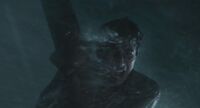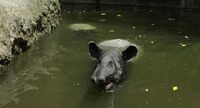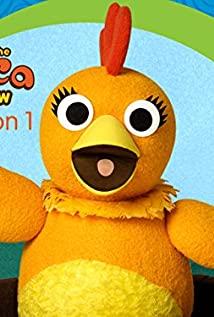This film review is in-depth spoilers, those who have not seen the original film should not enter.
After watching the young pie, I was really impressed by director Ang Lee's shots and beautiful special effects, but after reading countless film reviews, I saw a terrifying human nature story behind the story, which is creepy. Humanity story. There is only one true ending, not an open ending. So today, instead of appreciating the shots and special effects, let's sort out the plot.
In fact, Ang Lee told five stories for everyone. The first is a story about a boy Pi who gets on a boat with zebras, orangutans, hyenas and tigers after a shipwreck. In theory, this story occupies the largest space in the entire film, but it is full of loopholes. There is a shipwreck in the middle, and the whole ship is dead. Only Pi and the four animals get on the lifeboat. A zebra with a broken leg, a hyena, an orangutan and the tiger who nearly bit his arm. After that, the hyena killed the zebra, killed the orangutan, the tiger ate the hyena, and Pi tamed the tiger and drifted with the tiger for 227 days, unscathed until rescued. I also went to an uninhabited island with tigers. All the food on the island can be eaten, there is fresh water on the island, and there are foxes all over the island. And the reason why he didn't starve to death is because he got supplies on this island. And the island doesn't even exist on the map. If someone insists on saying that there are unexplored areas in the world, I have nothing to say, but creatures like Humeng live in deserts. And the fact that it is fresh water during the day and turns into strongly acidic water at night is unbelievable to anyone with a little knowledge of chemistry. And there is still a loophole in this story. My father said that all animals are locked in cages. If everything is told so simply, do you still believe this story?
So Pi tells another story, and there were four people on the lifeboat, the sailor with a broken leg, the cranky cook, Pi and Pi's mother. In order to survive, cooks designed to kill sailors with broken legs and dried the sailors' meat into jerky for food and fishing. The mother was disgusted by this behavior and got into an argument with the cook and was killed by the cook. Pi killed the cook in revenge for his mother, and survived by eating the cook's meat. Zebras correspond to sailors with broken legs, orangutans correspond to mothers, and hyenas correspond to chefs. This story is more credible and logical, but there are also certain loopholes. In the face of survival, would such a irascible chef give up his resistance because of guilt and let the party kill him? If you think it is possible, it is recommended to take a look at a few shots given to the chef before. And before that, there are several stories from the childhood of the Recordist. An excellent film art work must convey the plot and ideas to the audience in an extremely limited time. No single episode should be redundant. And Ang Lee is not Wong Kar Wai. His shooting is more orthodox and his ideas are very clear. Combining the initial story and a few shots that seem to be deliberately prominent, a third, darker story of humanity will emerge.
Pai has been a follower of three religions since childhood and is a vegetarian. The director constantly emphasizes that his father is a new Indian who does not believe in religion and advocates science. Suffered from polio as a child. Later, in the scene of the prayers, the father watched at the door and left with a limp. My father's polio has left after-effects, and his legs and feet are not good! So the first two stories are all lies from Pi's - it's not a zebra or a sailor who jumped into the lifeboat first. When I first saw a zebra with an injured leg, my heart shuddered. I had a premonition of the trend of things going on at the time, and a series of subsequent episodes continued to convince me that this was indeed Ang Lee's hidden story. In fact, it was this family who sat on the lifeboat. Lame father, mother, brother and pie. The elder brother corresponds to the hyena. When he explained to the investigator, he was actually trying to cover up. He and his elder brother had amputated their father's limbs, and his father died of blood loss. In extreme starvation, the older brother fished with the flesh of his father's corpse. The mother couldn't accept the brother's behavior, and slapped the brother (you can look back at the fight between the hyena and the orangutan, and now think about it, this slap is really too real. It is full of a mother's disappointment for her son, and Fear in a desperate situation. Again, any plot is useful. The hyena was flashed to the ground, and it must have its mapped content.) At that time, the hyena did not fight back. Imagine if the mother beat the cook, how could the cook not fight back. Pi later said that once he failed to catch a turtle, he had a conflict with the cook, in which he killed his mother. The truth should be that the elder brother Ravi killed his mother by mistake during the dispute. Afterwards, the juvenile faction lost his mind and killed his brother. The older brother did not resist in remorse and despair. And if the protagonist of all this is the chef, then Pi can only be killed with his mother, and there is no possibility of killing the chef. In the battle of survival, the chef cannot feel guilty for a few strangers who have quarreled. (The chef's casting is well received, and people can overthrow Pi's lies at once.) So when Pi kills the fish for the first time, the color of the fish turns gray, which is a metaphor in the heart. He killed his brother, you can look at his Cry and repent and everything will be understood. In the end, he still ate his own family. The Cannibal Island further shows that he ate human flesh. The purple-red tree root is a metaphor for the corpse, while the strong acid lake is a metaphor for his stomach acid, and the teeth on the tree are the fear in his heart when he sees the teeth on the corpse's face. Everything on the whole island is edible... And the dense foxes on the island refer to the maggots after the rotting corpse... Whenever I see tigers that suggest the dark side of the juveniles are eating foxes, a rush Intense nausea ensues.
If the third story is difficult for you to accept, then the fourth story may be a bit cruel to you. A story at the beginning explains the origin of the school's name. A child who can write down a blackboard full of pi from a young age must have a good memory. In later growth he met his first love, Ananti. But why does a pie with such an excellent memory repeatedly stress that he can't remember how to say goodbye to Ananti? (The repeated emphasis must be related to the main plot.) After being rescued, the adult Pi can return to India to meet Ananti again, but why did he say that he lost his family and Ananti? Because they didn't say goodbye! Don't say I'm reading too much, because a lot of details in the movie illustrate this event. Before the shipwreck, in the middle of the night, why did Pi rush to the deck alone in the heavy rain? What is he leaning on the railing for? If you relate to the plot just now, you can infer that he took Ananti out of India and hid it on a lifeboat. He rushed out of the cabin late at night just to make sure Ananti was safe in the storm. So there are actually five animals on the lifeboat, and that's right, the mouse. Later, under the pressure of survival, the symbolic tiger ate the mouse. There are multiple metaphors in the movie that confirm this wild speculation. The first is that after all the food and other supplies were lost, in the despair of starvation, the red rope that Ananti sent to the pie turned white. The second is that Pai tied the whitened red rope to the Cannibal Island. It can be understood that he tied the knot to Ananti's body and gave it back to her. Finally, a close-up of the whole man-eating island is also in the shape of a lying woman. Therefore, this memory is difficult to recall and cannot be recalled.
The above four stories have been told by Pai and I have speculated based on the plot. All this is really hard to accept. People are more willing to believe the first story, because everyone understands and sympathizes with the choice that Pai made in the face of survival. So I believe the first one is also forgiveness for the party. Then the last story, maybe director Ang Lee really wants to tell. This may not be a story, but more like a truth to the audience.
I still have to talk about the use of the camera. If you find out carefully, in all the third-person perspectives of God in the story, there are only pie and a ship in this sea area, and there are no humans and animals. Perhaps all of this, just like the English version of the movie's title, is about Pi's life. A pie who wandered alone in the sea of society after being separated from his family. The so-called tiger is the beast in his heart. While battling the dark side, Pi also has what it takes to survive. Therefore, he constantly thanked the existence of the tiger. In the end, when he really reached the other side and settled his soul, the tiger left without looking back with his childhood and innocence. So, everyone is a teenage pie, and at the end of the day becomes a sane adult.
It is really difficult for a Chinese director to win the Oscar, because of cultural differences and many other factors, so he has to do better. And "The Fantastic Drifting of Young Pi" did indeed do it. Pi told two stories and presented us with the tip of the iceberg, while the iceberg hidden under the water requires our own guesses and inferences.
I don't know if everyone felt that during the viewing process, that is, the carcasses of animals on board could not always be seen. In fact, it is very simple. Movies are used to record beauty, and people's memory will deliberately avoid those painful things. The more painful it is, the deeper it is buried, the less willing to touch it. When Pai told stories, he hoped to use the animals he grew up with to heal himself to avoid that cruel shadow. But in the moment of facing the death of a loved one, nothing can replace the shock and grief. So he masked the image in his mind.
Years later, when Pi asked others which story they were more willing to believe, most of them chose the first story. Although we all know that fairy tales are false, the tiger in our hearts walking into the forest will always explore it from time to time. In the beginning, tell us to believe in fairy tales. He said: "This story is also closer to God." The reasoning about the plot is indeed a bit dark, and I prefer my over-interpretation, but the more I read it, the more certain I am about the inference. As for the religious ideas contained in this film, I will write a separate film review to evaluate. It is very profound, and even contains the idea that religious cosmology is close to the core. Just as Jin Yucheng wrote in "Flowers": God does not speak, as if everything is determined by me.
View more about Life of Pi reviews











